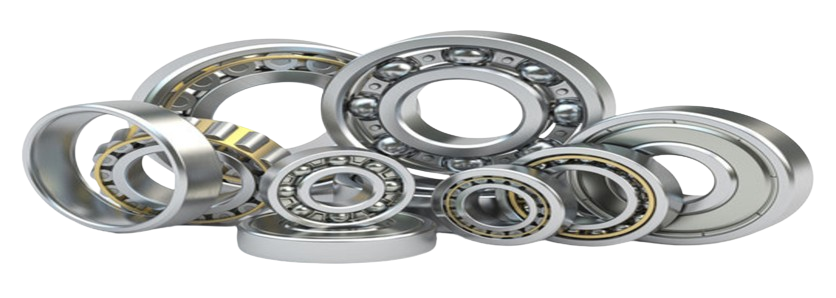BEARING

BEARING
A bearing is a mechanical component that supports, guides, and reduces friction between moving parts, usually between a rotating shaft and stationary housing.
Without bearings, machines would have high wear, energy loss, and heat due to direct contact between metal parts.
Bearings allow smooth, efficient, and precise rotation or linear movement.
For any service and support contact us.
Functions of Bearings
Reduce Friction → Smooth rotation/linear movement.
Support Loads → Radial load (perpendicular to shaft), axial load (along shaft), or both.
Maintain Shaft Alignment → Prevent wobbling/vibration.
Increase Efficiency & Life → Less power loss, less wear.
Absorb Shock & Stress → Protect machine parts.
Types of Bearings & Applications
1. Ball Bearings
Construction: Balls between inner and outer race.
Best for: Low–medium load, high speed.
Applications:
Electric motors, pumps, fans, household appliances.
Automobiles (wheels, alternators).
Industrial machinery.
Variants:
Deep groove ball bearings (most common, multipurpose).
Angular contact ball bearings (support combined loads).
Self-aligning ball bearings (allow misalignment).
Thrust ball bearings (handle axial loads only).
2. Roller Bearings
Construction: Cylindrical/needle/tapered rollers instead of balls → more contact area.
Best for: Higher load capacity, lower speed.
Applications:
Gearboxes, conveyor rollers, mining equipment.
Automotive differentials, truck wheels.
Heavy machinery.
Variants:
Cylindrical roller bearings (high radial load).
Tapered roller bearings (radial + axial load, e.g., car wheel hubs).
Needle roller bearings (compact, good for oscillating shafts).
Spherical roller bearings (very high load, misalignment possible).
3. Plain Bearings (Bushings / Sleeve Bearings)
Construction: No rolling elements, just sliding contact (lubricated).
Best for: Low cost, high load, low speed.
Applications:
Engines (crankshaft bearings).
Pumps, compressors.
Hinges, linear slides.
4. Magnetic Bearings
Construction: Magnetic fields levitate shaft → no contact, no friction.
Best for: High-speed, precision, zero lubrication.
Applications:
Turbo-molecular pumps.
High-speed turbines, aerospace.
Energy storage flywheels.
5. Fluid Bearings (Hydrodynamic / Hydrostatic)
Construction: Fluid film separates surfaces.
Best for: Very heavy load, quiet, shock absorption.
Applications:
Hydroelectric turbines.
High-speed machine tools.
Marine propeller shafts.
6. Special Bearings
Thrust Bearings → Handle only axial loads (e.g., automotive clutches).
Linear Bearings → Allow smooth straight-line motion (e.g., CNC machines, robotics).
Pillow Block Bearings (Plummer Blocks) → Mounted bearings for supporting rotating shafts in conveyors, fans, and industrial systems.